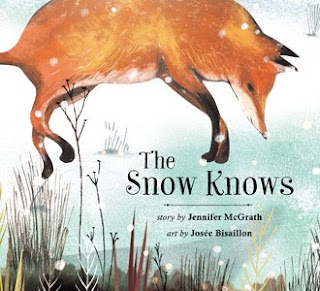Written by Fanny Britt
Illustrated by Isabelle Arsenault
Translated by Christelle Morelli and Susan Ouriou
Groundwood Books
978-1-55498-859-4
160 pp.
Ages 9-14
October 2017
From the acclaimed partnership of Fanny Britt and Isabelle Arsenault that brought us the award-winning Jane, the Fox and Me (Groundwood, 2013), which was also translated by Christelle Morelli and Susan Ouriou, comes a second graphic novel of emotional sensitivity, this time in a complex familial context.
The title may suggest a children's game of spying but Louis is more discreet observer and listener. He watches important people in his life and sees what they do and hears what they say. These observations form the fabric of his interactions with them, bringing out his sensitivities, fears and compassion. And he has much to observe, as he and his little brother Truffle bounce between their city apartment where they live with their mother and their country house where their alcoholic father still lives.
 |
From Louis Undercover
by Fanny Britt
illus. by Isabelle Arsenault
|
She’s a spectacled siren, a rainstorm,
A chocolate fountain, a silent queen. (pg. 50)
 |
From Louis Undercover
by Fanny Britt
illus. by Isabelle Arsenault
|
He is overwhelmed by his affection for Billie but he is immobilized into inaction.
I had no idea that love is like a rock shattering your heart, as painful as it is life-giving, and that even as it makes you want to bolt, it keeps you glued to the spot. (pg. 58)
Though he makes plans to speak with her, just to say a few words to the gutsy girl who stands up to injustice and reads voraciously, he can't do it, even with the summer holidays imminent and a gift of dice for her in his pocket.
 |
From Louise Undercover
by Fanny Britt
illus. by Isabelle Arsenault
|
But two weeks of the summer at their father's becomes a turning point for the family. Their father has stopped drinking and seems to be his old positive self, as reflected in the splashes of yellow, hitherto reserved for Billie. Though their mom is seen as mired in the sadness of the turquoise and the browns of regular life, when Truffle is injured and sent to hospital, she rushes to his side and stays with them at their old house. She makes breakfast and laughs with their father and sleeps in his bedroom. They're back to their "normal" family and a trip to New York City holds the promise of a complete reunion. But, sadly and realistically, the yellows give way to the family's blues of the past. Returning to school in the fall, Louis can take this experience as a life lesson that love can end badly or he can see the hope that it can conquer the worst.
Fanny Britt has given us a story about a family dealing with an alcoholic parent and creates a story of understanding. Louis sees what has happened to his family and is disheartened by it. He recognizes the signs of his father's drinking and the impact on his mother and their family. He is wary of love and how it can go horribly wrong. (Note Louis' watching of his sober father playing with the happy Truffle in the illustration above.) Even his mother, ever immersed in the sadness of needing to be separated from her husband, holds out hope for recovery and reconciliation. How Louis will adapt that understanding to his own crush on Billie, desperate to speak with her but reluctant and apprehensive about the outcome, is an ending that must be read and seen to be fully appreciated.
 |
From Louis Undercover
by Fanny Britt
illus. by Isabelle Arsenault
|
Isabelle Arsenault does emotional storytelling in illustration. She doesn't just draw pictures to go with the story; she builds the story with surreal elements that create depth and carry the nuance of Louis' family's circumstances. The use of yellow and turquoise, with the browns and greys, subtly convey the emotion of each situation. The yellow is positive and hopeful and cheery, as when Louis watches Billie or his family is happy and Dad is sober. Turquoise permeates those illustrations of lives living with heartbreak. Real life is brown and grey because it's sobering and no-nonsense.
There is much sadness in Louis Undercover. Turquoise and browns and greys are the overwhelming colours. But be assured that there is yellow in Louis' life and Fanny Britt resolves his story with a subtle explosion of positivity matched by Isabelle Arsenault exquisite artwork.














































